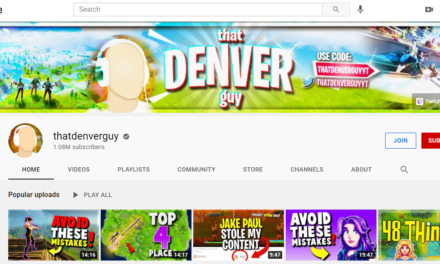You can barely open up your web browser without the words “live streaming” smacking you in the face. Whether it’s someone raving about Periscope or claiming you must be on Meerkat or risk missing out on the “next big thing,” you’re surrounded by the reality that is the live-streaming phenomenon of 2015.
Most marketing experts and internet culture junkies agree that live streaming has exploded in popularity over the last few months for one main reason: Real-time broadcasting appeals to the human desire to live out new experiences vicariously through someone else. Whether the streams are by a stay-at-home dad cooking dinner or a celebrity taking viewers through a red carpet event, the plethora of live streams available is mind-boggling.
Let’s get one thing clear, though: Live streaming is not a new concept. Video gamers have defaulted to the live-streaming site Twitch for years to broadcast their latest gameplay sessions and connect with fans. It’s not surprising that Amazon doled out $970 million in August 2014 to acquire Twitch. And you can’t forget the online porn industry, which has used live streaming for adult entertainment in various formats since webcams were invented.
What makes live streaming so much more powerful now is its accessibility. Before, most people who wanted to broadcast live were tethered to their desktop or laptop in front of a webcam. With the introduction of apps such as Meerkat and Periscope, anyone who wants to live stream can do so directly from his or her phone.
So why is live streaming important for the content industry? How could publishers and creators use live streaming for business purposes while delivering high-quality broadcast experiences to their audiences and customers? And do content publishers even need to worry about doing their own live streaming?
To put it simply, having even a basic knowledge of live streaming can benefit content publishers and creators. Once they understand the powerful, direct connection it provides between the broadcaster and audience, publishers can take their businesses to a whole new level.
So how do content publishers or creators start using live streaming for the benefit of their businesses and their customers? Essentially, putting an audience’s needs in mind first is all that has to be done; in this way, live streaming is no different than any other piece of quality content marketing. And fortunately, this audience-centered focus makes implementing live-streaming goals easier on industry publishers and creators overall.
For example, internet marketer and Social Triggers founder Derek Halpern discovered his audience was more than eager to tune in to an impromptu, live Periscope stream to learn marketing tips and lessons. In fact, Halpern garnered about 750 viewers on his first Periscope stream alone; that’s more attendees than some businesses can claim for their prescheduled webinars. Halpern can keep giving away advice via Periscope, because by putting his audience’s needs first, he ends up helping his own business goals too.
Content publishers can employ the same tactic as Halpern within their respective niches. Online magazines can have their journalists live stream a breaking news story. A social media agency can use Meerkat or Periscope to broadcast quick marketing tips to newsletter subscribers who tune in to the stream. Those who make a living purely from creating content can get as creative with live streaming as they wish; for instance, YouTube stars Matthew Santoro and Nicole Arbour put together a music video made up of clips exclusively shot via Periscope.
Not all publishers and creators will fit live streaming into their overall marketing and content goals, and that’s OK-they’ll still be ahead of the game. A recent survey by Horizon Media found the majority of adult respondents didn’t even know what Meerkat or Periscope was or had no interest in either one. Many adults even said they preferred if brands stayed off the live-streaming bandwagon altogether.
So is live streaming right for your content business? That’s up to you–and your audience–to find out.






